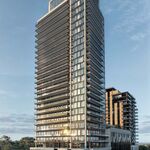nfitz
Superstar
Because he advocates not trying to get fully-funded rapid transit projects cancelled? Really?I agree with CC on this one, you just lost whatever credibility you had left...
Because he advocates not trying to get fully-funded rapid transit projects cancelled? Really?I agree with CC on this one, you just lost whatever credibility you had left...
Because he advocates not trying to get fully-funded rapid transit projects cancelled? Really?
Well considering you and CC have very little credibility to begin with, I'll throw this in your face, since you called it on Justin10000:
Perhaps you think that it wasn't worthy of LRT ... but there are even some people out here who look at the relatively low ridership, and actually have the gall to suggest that it should be subway!Because he advoctes for a "rapid transit" project that had no business being funded in the first place, because the planning rationale for it is dubious at best.
A little underdone ... but I'd think Ottawa-style BRT wouldn't actually fit in the alignments being studied, as the roadways are so wide, and the stations are very wide.And I called bullshit on his assertion that a BRT lane could only handle 2000 pph. Seriously, come on.
Except, that 1.1 Billioni is only going to help riders lucky enough to live near the 2 stations(Vic Park, Warden) who can walk in. I just do not understand why people are so obsessed with speed, and using only subways to achieve the highest speed possible to the station, and have no answer beyond "they can transfer to buses to complete their journey when they reach the station." I heard that the 190 express bus route had stops ADDED by request from the riders. Pretty solid evidence, people want stops nearby. How do you propose to address this issues with a subway with widely spaced stops? A subway to Warden is not going to help anyone, except force a transfer at Warden to buses. Nothing's changed except the terminus is now Warden, instead of Don Mills. I am really trying to wrap my head around this thinking that only subways can deliver quality transit, and buses providing low to intermediate capacity transit. It was proven, buses cannot provide intermediate capacity transport with significant infrastructure, and operating costs. Light Rail can provide intermediate capacity needs without significant infrastructure. Why do you, and others discount the positive role surface rail can provide?
It's been repeated over, and over agaiin, but speed is not the main determinant in attracting riders. t's a part of the equation, but you, and others seem to be only focusing on speed.
The SELRT is going to be a major success, whetever people like it or not. Is it really worth spending energy trying to stop something that will be built?
I call bullshit. The bus lanes in Ottawa's downtown carry 10,500 pphpd (http://www.octranspo1.com/about-octranspo/reports). That's through a downtown area, with close station stops, etc. The bus-only lanes on the suburban corridors (Woodroffe comes to mind) have an even higher capacity than that. Granted, the downtown can't handle much more than what it currently is, but not being able to handle 2,000pph?
His assumption may be overly simple, but your facts are fundamentally flawed.
I agree with CC on this one, you just lost whatever credibility you had left...
Not likely. The bus lanes in the downtown core are so packed, the buses crawl through the core, nullifying any sort of speed advantage gained on the segregated sections. That is curb bus lanes at 10,000pph. The same mode you advocate.
I still don't like that idea. LRT can work well, as seen in European cities. But LRT just isn't suited for Sheppard. Connecting two major density nodes and a rather dense corridor in between, with basically a sudden transition to suburbia right after that corridor begs for subway, and regular bus service after that. LRT would be great on a couple routes in Toronto. But if you prove Sheppard as the failure of LRT, that makes people think that LRT is a stupid idea for something sensible like Finch West.
Ford has the best plan...which imho is to build subway to airport then don't build anything else. Saves tons of money on unions, contractors and mobsters.




